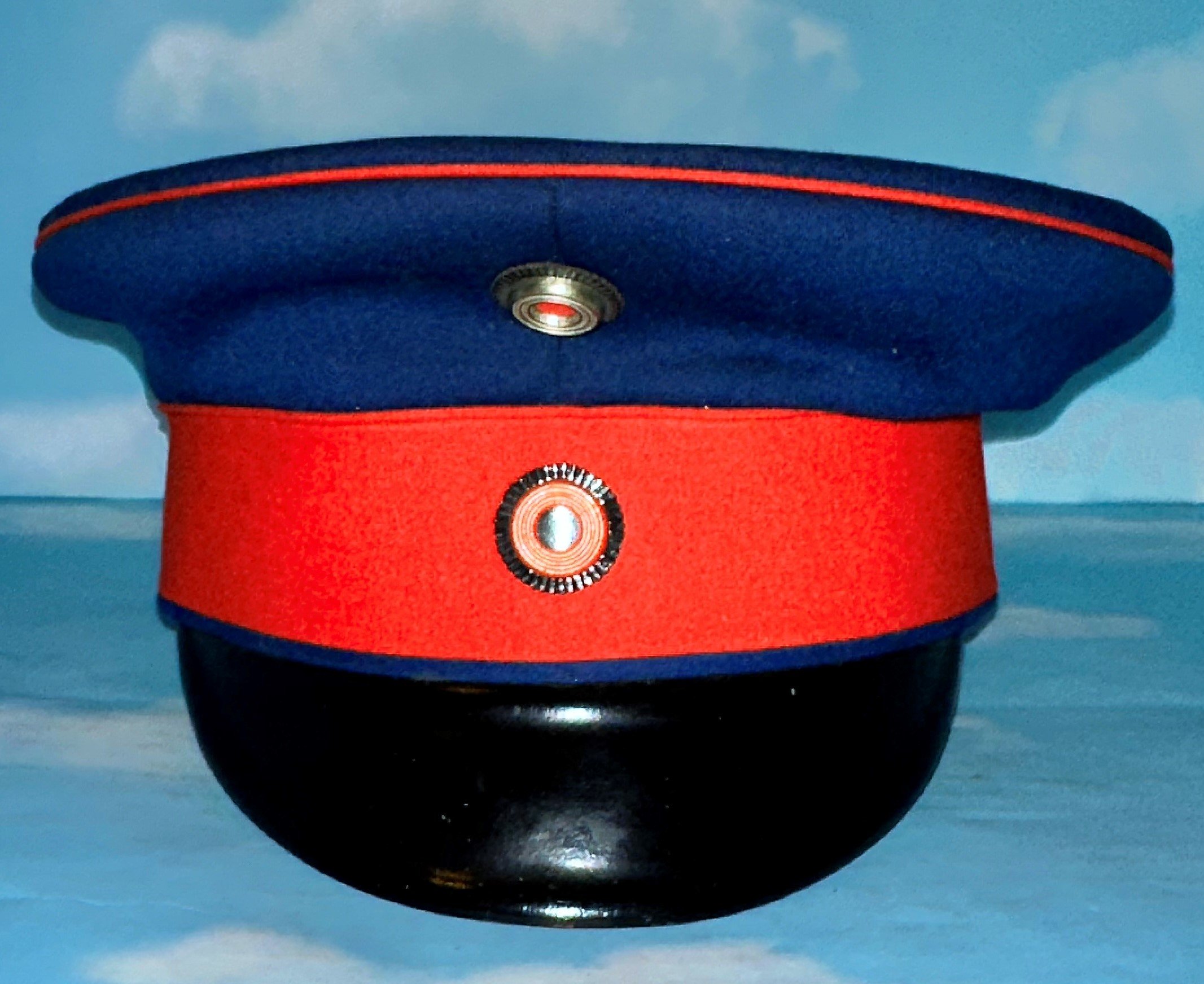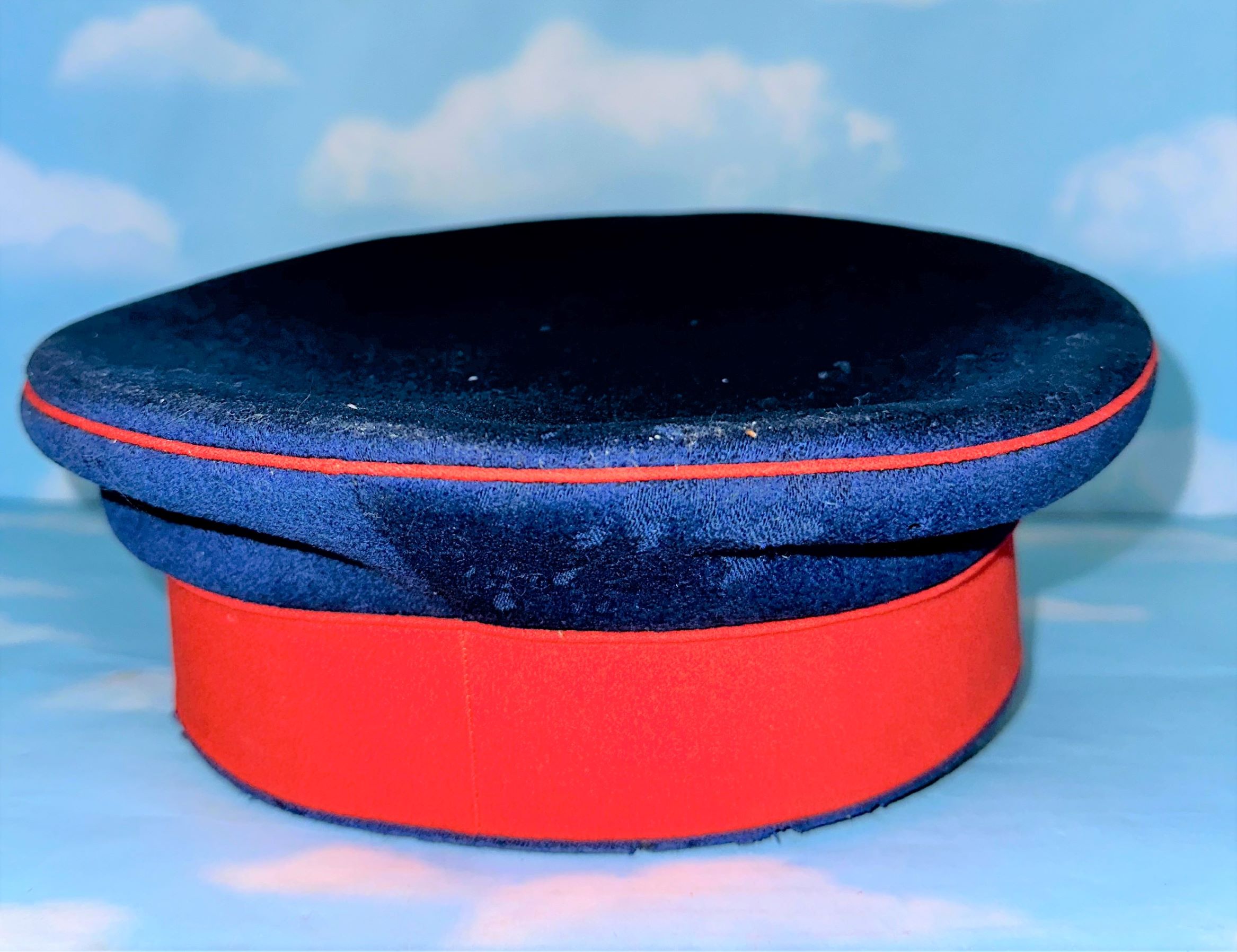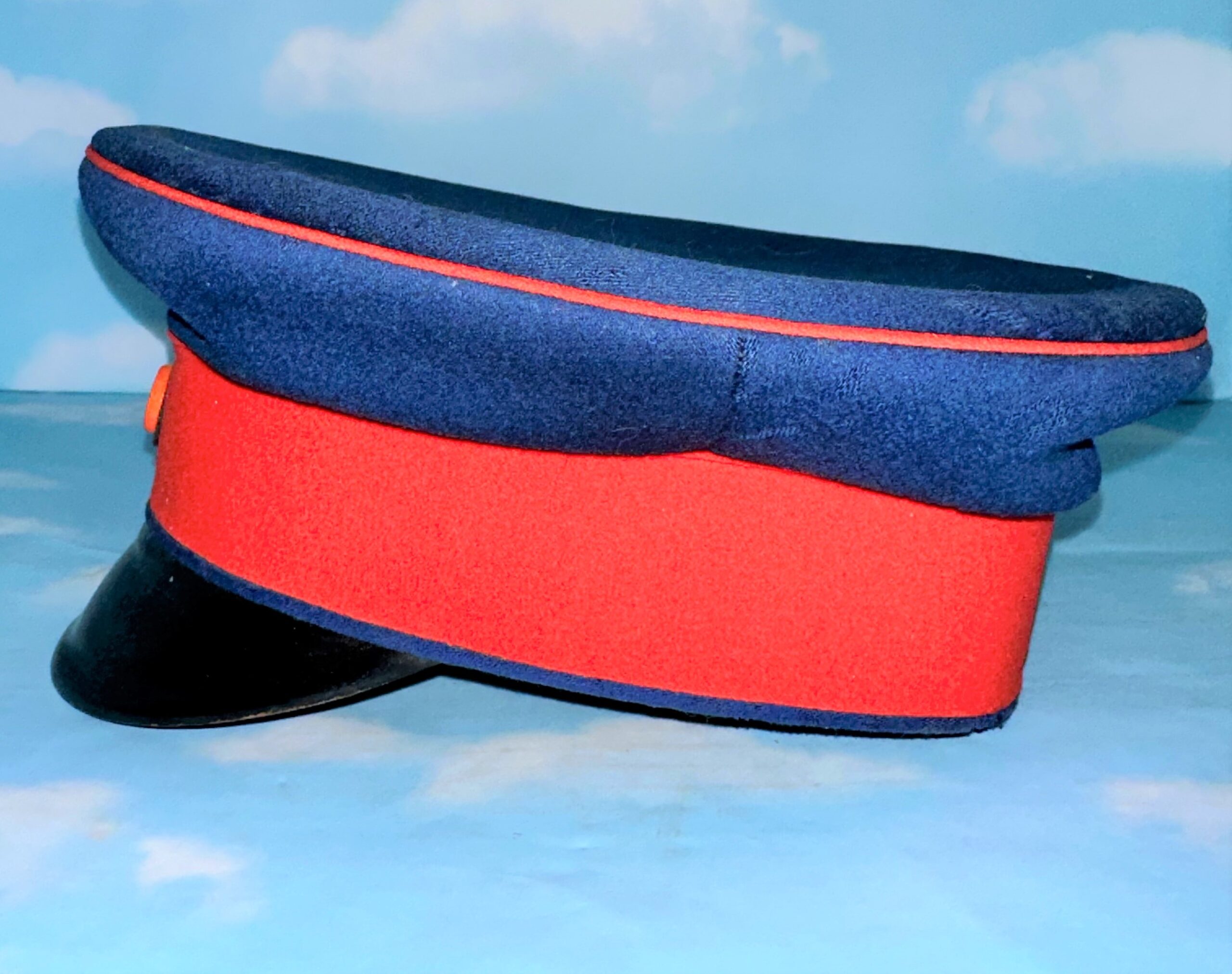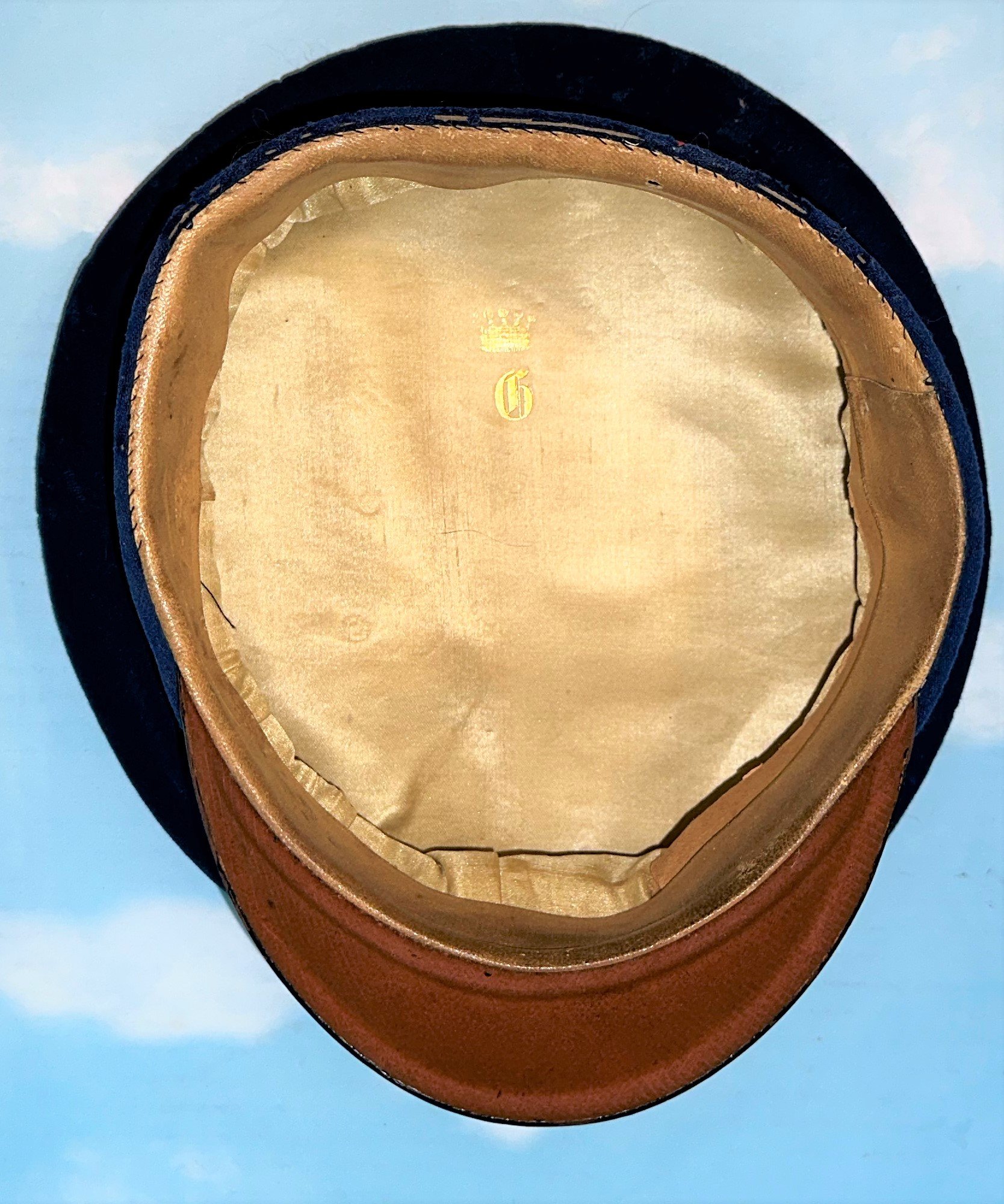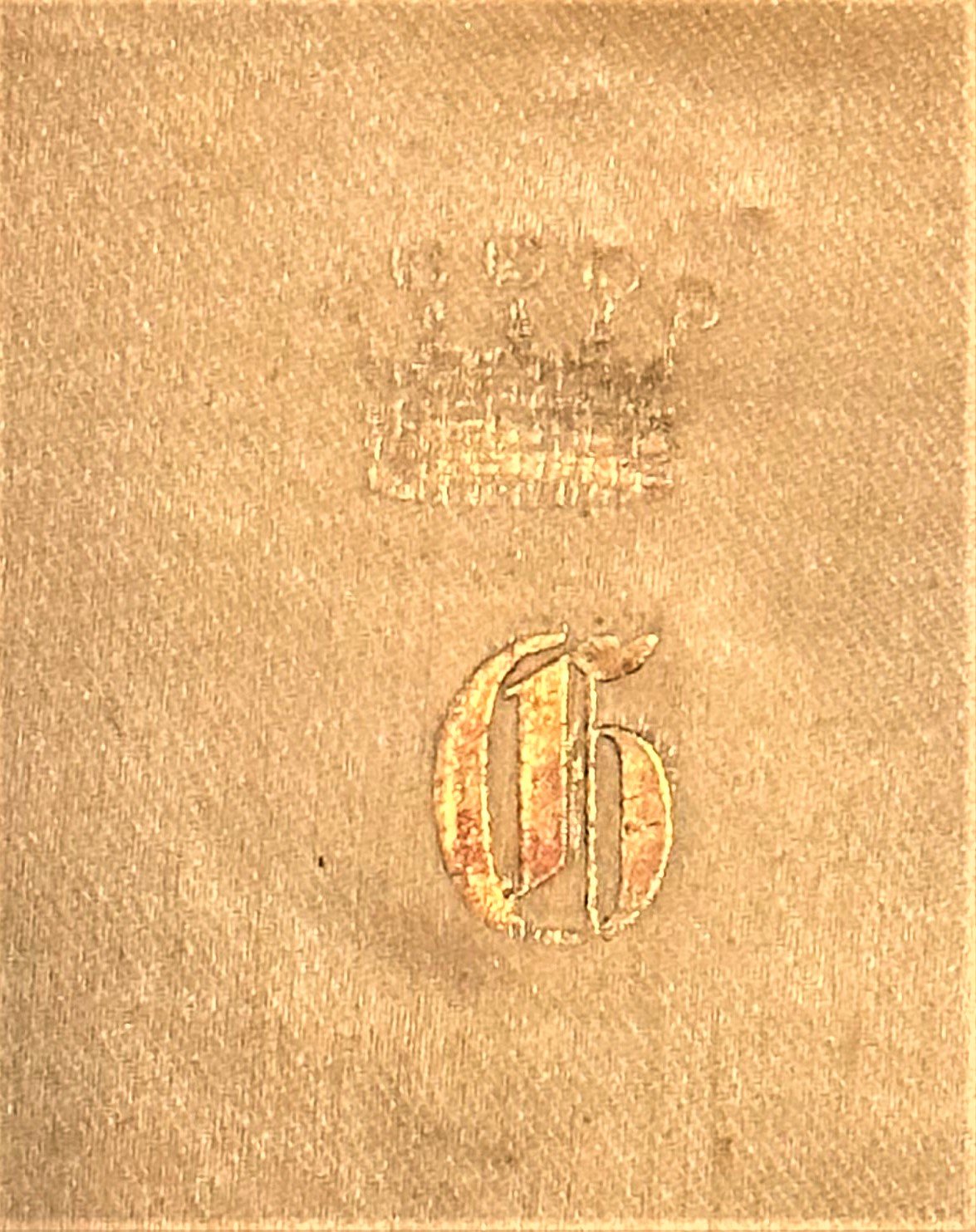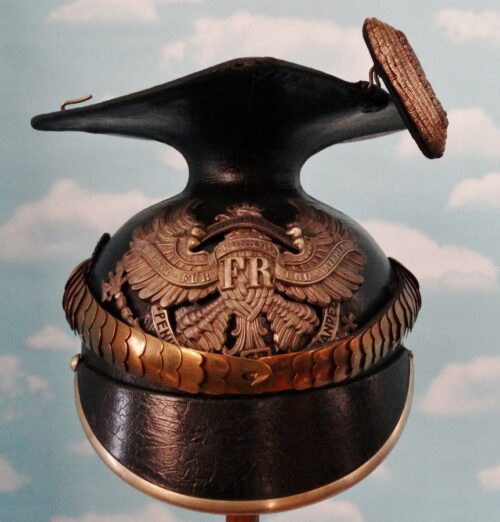Description
This schirmmütze is a rare officer’s cap from the Kingdom of Württemberg, suitable for both cavalry and infantry. With its high peak design, it makes an impressive statement and dates back to the pre-World War I period of 1900-1910.
The cap’s dark blue top is crafted from the finest Doe’s wool, although there are some minor signs of moth tracking and a small nip in a few areas. The red band made of felt and is accented with two red trim bands, one at the top of the wide red band and one at the cap’s crown. The black visor is also well-made and finely conditioned, and the cap is adorned with the reich and state kokarden centered on it.
Inside the cap, the details are even more fascinating. The brown leather sweatband is very well-preserved and remains fully in place, while the cream-colored silk liner is in excellent condition. The liner is stamped with the five-tipped crown of a Freiherr (Baron) in gold, below which is the cypher “G” in the old German fraktur, also in gold.
This cap is a rare find and would have belonged to a member of the nobility. Despite being over one hundred years old, it remains in top condition and is sure to impress any collector.
The Kingdom of Württemberg was a state in southern Germany that existed from 1805 to 1918. During the pre-World War I period of 1900-1910, the Kingdom of Württemberg was a member of the German Empire, which was a federal state that included 25 constituent states, one of which was Württemberg.
During this time, Württemberg was a prosperous and industrialized state, known for its textile manufacturing, machinery production, and wine production. The capital city of Stuttgart was a center of commerce and culture, with a thriving art scene and several universities.
Politically, Württemberg was a constitutional monarchy, with a parliament (the Landtag) and a ruler (the King of Württemberg). The king had considerable power, but was also subject to constitutional limitations.
Württemberg played a significant role in the German military during this time, with its army contributing soldiers to the German Imperial Army. The state also had a strong tradition of cavalry, which is reflected in the officer’s schirmmütze described in the previous question.
Overall, the pre-World War I period was a time of relative stability and prosperity for Württemberg, although the outbreak of World War I in 1914 would soon bring significant changes and challenges to the region.
